2017 BMW 520d, 530d review, road test
With less weight, more power, new tech, better luxury, greater comfort and more equipment, BMW has left no stone unturned in the new 5-series.
Published on Aug 15, 2017 10:05:00 AM
70,537 Views
Follow us on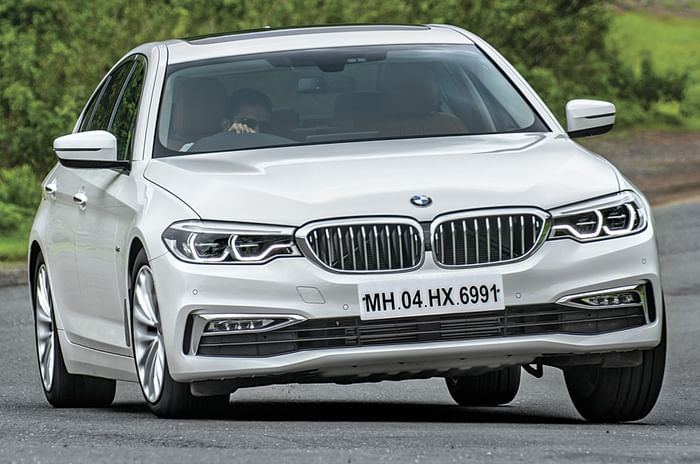
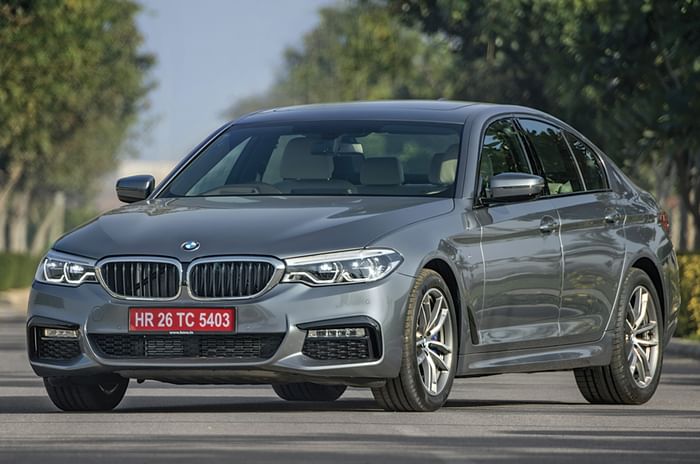
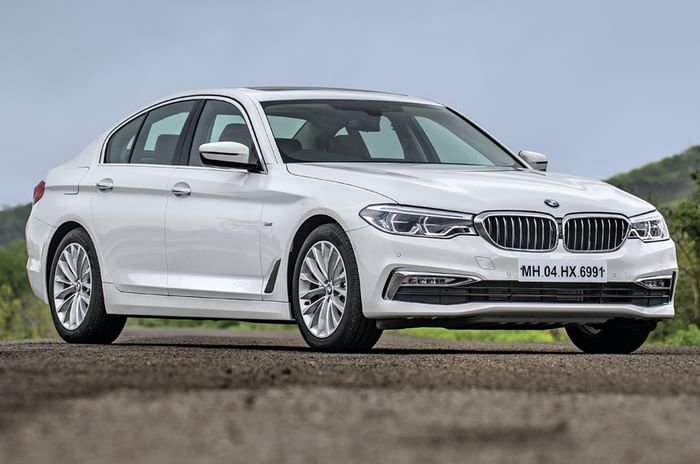
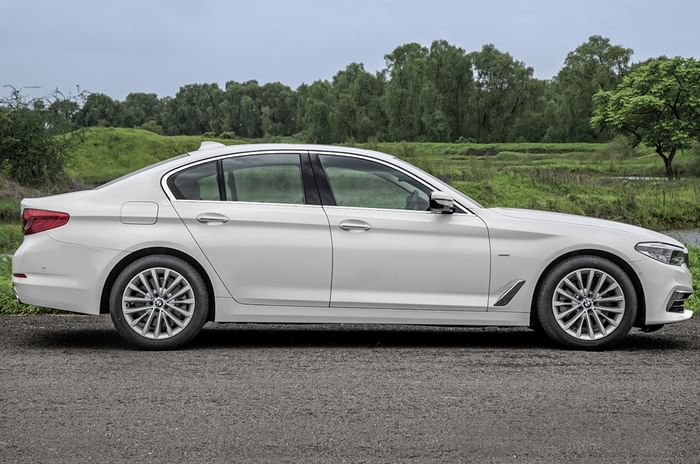
The new 5-series’ to-do list is quite long and intimidating. As ever with a new-generation model, it has to be bigger, more spacious, more luxurious, more tech-laden, better performing and yet, somehow, more efficient than its predecessor. But with brand-new rivals from Jaguar, Volvo and most notably Mercedes-Benz, it has several new benchmarks to meet and surpass. But perhaps the one that is key to the 5-series formula, given the brand that BMW has built itself on, is driving pleasure and handling prowess, something the previous ‘F10’ version sacrificed a lot of in the quest to be a better luxury car. Well, BMW calls the new ‘G30’ 5-series the ‘business athlete’, so surely we have a lot to look forward to.
Design and engineering
At first glance, the new 5-series looks a bit too familiar. Yes, using a unified design theme across a family of models is commonplace among all luxury brands, but it’s the proportions of this 5-series that give the game away. Where the long-wheelbase 7-series looks visibly stretched, this one actually looks visually compact, and in fact could even be mistaken for a 3-series at first glance. It is 36mm longer, 6mm wider and 2mm taller than its predecessor, but it no longer has as much of that purposeful ‘cab rearward’ look typical of BMW sedans of old. That is to say the roof slopes and stretches a lot further forward and rearward (no doubt to the benefit of interior room), so the bonnet and boot don’t appear quite as long and pronounced as they used to. The tail-lamps are wider, and the headlamps are larger too, with LEDs as standard (adaptive LEDs on higher trims). Even the grille is wider, if a bit slimmer, and all this together with tighter skinning makes the car look smaller than it is; you’d really have to park it alongside an older 5-series to see that it’s grown. The only real giveaway is when you realise it’s riding on 18-inch wheels (19 and 20-inchers are options), that, although the same size as the previous car’s, appear a bit smaller here.
Granted, this sensation is a lot greater on the 520d Luxury Line model you see pictured here in white. Its simpler bumpers and subtler wheels draw your focus more to the lines of the car. The M Sport pack on the six-cylinder 530d gives the car a much more confident stance, the aggressive front bumper, side sill extensions and the faux splitter at the rear adding some welcome volume to the shape. Even the choice of alloys is a sportier 10-spoke design with blue-coloured ‘M Sport’ brake calipers peeking through them. What also helps the stance is the larger 275-section rear tyres on the more powerful 530d; the 520d gets 245-section rubber at all four corners.
| BMW 5 Series Price, Mileage, Specifications, Features and Variants | |
|---|---|
| Brand | BMW |
| Model Name | 5 Series |
| BMW 5 Series Price | ₹ 84.35 lakh - 2.30 crore |
| BMW 5 Series Range/Mileage | Petrol : 15.7kpl |
| BMW 5 Series Specifications | Sedan | 4 doors | 5 seats View All Specs |
| BMW 5 Series Features | Matrix LED headlight | 14.9-inch Touchscreen display | 7 airbags View All Features |
| BMW 5 Series Variants | 530Li M Sport 2.0 Petrol | M5 xDrive 4.4 PHEV View All Variants |
There are also some cool aerodynamic touches that, BMW says, have helped lower the drag coefficient (Cd) by 10 percent to just 0.22! Inlets in the front bumpers and outlets just behind the front wheel arches help reduce turbulence in the wheel wells, and the kidney grille has mechanical louvers that shut when the engine doesn’t need cooling, reducing drag and improving airflow over the car.
The car is based on the modular platform that debuted on the ‘G11’ 7-series a few years ago, but it doesn’t feature the 7’s ‘Carbon Core’, in which certain critical structural components of the chassis are made from carbon fibre for weight savings and enhanced rigidity. Still, thanks to a greater use of aluminium in the monocoque chassis and bodywork, the ‘G30’ 5-series weighs as much as 100kg less than its F10 predecessor in some variants. The wheelbase is 7mm longer and the front and rear tracks have been widened by 5mm and 3mm, respectively. Suspension is via double wishbones at the front and a five-link setup at the rear, and BMW has done well to offer dynamic dampers as standard on all variants of the 5-series. The engines are, as ever, sited longitudinally, far back inside the engine bay, powering the rear wheels through eight-speed, ZF-sourced, torque-converter automatic gearboxes.
Interior
The previous generation of BMW interiors was starting to age quite a bit, more so because they all looked so similar to one another. The new car does follow the template started by the 7-series to an extent, but also makes an effort to set itself apart. The central console is ever so slightly canted toward the driver, and the dashboard has more of an asymmetric layout, with the thick slab of wood (smart grey-textured plastic on the M Sport) tapering away on the passenger side. The 5 has borrowed a lot of switchgear and parts from the 7-series, for better and worse. There’s more brushed silver on the dash, for instance, but much of the metallic switchgear (like window switches and steering controls) has given way to more ordinary, although still high quality, black plastic. There’s also the 7-series’ touchscreen control for the AC blower speed, tricky to use on the move, and the odd single plastic button for all three drive modes, which feels fiddly and doesn’t always work on the first go. Still, all the other controls work with a wonderfully damped feel and there is a high-quality ambience to the cabin. We particularly like the 520d’s tan leather option with blue contrast stitching, although the 530d M Sport uses higher-grade Nappa leather, as opposed to the 520d’s Dakota leather.
And while on the subject of seats, again, their spec varies based on which variant you have picked. Base ‘Sport Line’ variants actually get sports front seats, which offer more support and adjustment than the ‘Luxury Line’ seats which, shockingly, don’t even offer lumbar support adjustment; you can merely adjust the height, seat-base angle, backrest angle and fore-aft position. The ‘M Sport’ offers huge, well-contoured seats with a wide array of adjustments, including bolster width and squab length. Both types of seats tested here are wide enough for big frames and offer soft cushioning and good comfort, but the added bolstering and adjustability in the 530d’s Comfort Seats definitely offer better support.
Move to the back seat and again you’ll find generous cushioning from the bench, although it does appear to be quite flat. Some might also find the backrest a bit too upright, compared to the older car which had the ‘China-spec’ seat oriented for chauffeur-driven owners, but once you’re in place on the move, it’s hardly a bother. What’s also nice is that you don’t sit as low down as you did in the previous 5-series, and as ever, BMW’s ‘Hofmeister kink’ signature design feature (the window line angles sharply backward at the C-pillar) makes for a large quarter glass area and a good view out. Legroom is very good back here, as is thigh support thanks to a long seat squab, and there’s even surprisingly good headroom owing to the scooped-out roof. Strangely, there is a huge pod that protrudes from the centre of the roof to house the rear reading lamps, and though it doesn’t really impact headroom, it seems unnecessarily large.
The new 5-series is listed as having a 530-litre luggage capacity on the international spec sheet, but that doesn’t factor in the bracket that BMW has installed on Indian cars to house the spare tyre and toolkit. Because the car is offered without a spare in Europe, BMW India has made this arrangement in order to accommodate a space-saver, as a spare is a must in our market. This reduces the volume to just 400 litres, but you do at least get a flat boot floor (apart from peace of mind) and it will still swallow a couple of suitcases.
Equipment
BMW has put a big emphasis on equipment with the new 5-series, and while the base Sport Line (530i/520d) might be missing a few features, the middle 520d Luxury Line trim is very well kitted out, while the 530d M Sport is seriously loaded. Let’s focus on the latter two tested here, priced at Rs 53.60 lakh and Rs 61.30 lakh (ex-showroom, Delhi), respectively. What you get as standard on both cars is adaptive dampers, gearshift paddles, adaptive LED headlamps, four-zone climate control, automatic headlamps and wipers, powered steering column adjustment, powered front seats with driver-side memory, a 600W Harman Kardon hi-fi system, 360-degree surround cameras, auto-parking assistant, a wireless mobile charging mat, driving modes, and a sunroof, albeit not a panoramic one. Both cars get the latest, fully loaded version of BMW’s excellent iDrive system (see box) and both also get the BMW Display Key – a touchscreen-operated key fob that lets you check the car’s available range, pre-heat or cool the car and, of course, use the remote parking function, which can start up and drive the 5-series forward or back out of a narrow spot while you are outside. On top of this, the 530d M Sport gets unique features like a heads-up display, launch control, passenger-side memory function, split-folding rear seats and a rear-seat entertainment system.
Engine, gearbox and performance
The G30, like the F10, gets the option of a 1,995cc, four-cylinder diesel engine or a 2,993cc, in-line six-cylinder diesel engine, each boosted by a single, twin-scroll turbocharger. However, though the displacement is unchanged, the engines are actually all new and come from BMW’s new modular engine family that it shares with Mini. Codenamed ‘B47’, the 2.0-litre, four-cylinder motor was first introduced in the 3-series facelift in 2016 and produces 190hp and 400Nm. The new ‘B57’ 3.0-litre straight-six was introduced in the new 7-series and now produces a solid 265hp and 620Nm!
There are high expectations for the performance then, but in the 520d, what impresses you first is the refinement. This motor has proven to be quite loud and clattery in both the 3-series and the new X1, but it’s far more refined here. It only really wakes up with some noise once you’re nearer to 3,000rpm, and if you don’t pin down the accelerator, the clever gearbox will make sure you never get near there, shifting up early in the interest of fuel economy.
Should you want to rev it out though, this motor will happily oblige, giving you a strong hit of power in the mid range and shifting really quick, yet still seamlessly. Of course, you’d have to do the two-step setup of putting both the car and the gearbox in Sport mode for the full effect. There is no launch control here, and our testing conditions were damp, but we still managed to crack 0-100kph in just 7.74sec.
BMW’s straight-six diesels have always been smooth and quiet motors, and that continues here. Yes, there is a bit of a hum at idle, and it starts to make a bit of a noise in the mid-range, but it’s such a pleasant growl, it’ll only goad you on to push harder. At 5.74sec, it cracks 100kph in near-sportscar territory, aided no doubt by launch control and those wider 275-section rear tyres. Even without launch control, in everyday driving, responses from this motor are just immediate, but not overwhelmingly so. Here too, the eight-speed ZF gearbox does a tremendous job of playing the unseen butler one minute and the determined boxing coach the next, depending on which drive and gearbox mode you have selected; it can sometimes be a little slow to react to a kickdown though, meaning roll-on acceleration times could have been better. Speaking of the drive modes, it goes without saying that you choose ‘Eco Pro’ only if you simply must eke out more kilometres from your tank, ‘Comfort’ works well for everyday use, and ‘Sport’ is the one to go fast with, in both the 520d and 530d. What’s nice is that both ‘Eco Pro’ and ‘Sport’ are configurable, so you can mix and match settings to your liking.
Ride and handling
While we criticised the previous 5 for losing its driver’s edge, it was hard to begrudge BMW for going the ‘soft’ route in a market that’s heavily chauffeur-driven. The inclusion of Dynamic Damper Control as standard across the new range is a smart move, as it should allow the 5-series to be a plush luxury car one minute and a sharp sports sedan the next. The good news is, no matter which mode you have the dampers in, the car never becomes uncomfortable. Over a patchy road, you will feel imperfections through your seat in the form of short-wave vibrations, but there’s no serious movement inside the cabin. Similarly, at high speeds on a smooth road, there’s very little heave or float, and you can improve this by putting it in Sport mode. And finally, credit must be given to the 45-profile tyres (40 at the rear for the 530d) which, despite their short sidewalls, manage to comfortably soak up a lot of the sharper edges and bumps. Even road and wind noise is impressively locked out of the cabin on the move.
So it’s comfortable, but is it the scalpel-sharp handler in the vein of the E60 and E39 5-series of old? No, it isn’t. However, the steering on both the 530d and 520d feels quicker than the F10’s, with less play around the straight-ahead position, so it certainly feels a bit more engaging than its immediate predecessor. There is, however, a little mushiness built in to keep things a little relaxed; it reminds you this is a luxury car at the end of the day. What is nice is that the steering has a nice heft to it as you go faster, especially when you put it into Sport mode. However, we found the 530d’s M Sport steering wheel rim to be unnecessarily thick in an attempt to be sporty; the standard one offered enough grip and confidence even for hard cornering, frankly. You might not initially notice the chassis improvements as you start to get used to the car, but once you start pushing harder, you’ll realise how much tighter and more agile it feels. The new 5-series, dynamically, is at its finest when you try to wring the most out of it.
Fuel economy
In both four-cylinder and six-cylinder diesel guises, the new 5-series delivers pretty decent fuel economy figures, if not quite class leading. The 520d returned 11.2kpl in the city and 14kpl on the highway, while the 530d managed 10.2kpl in the city and 13kpl on the highway. What’s really impressive is that in the city especially, these numbers are far better than the previous 5-series, which only managed 10kpl (520d) and 7.9kpl (530d) in our urban tests. The lighter weight, aerodynamic aids and a more effective stop-start system will no doubt have played a role in this.
Infotainment
The latest generation of BMW’s path-breaking iDrive is the best yet. In addition to the click wheel, it now features a touchscreen and gesture controls, the latter being limited in their functionality and effectiveness, but still very cool. The 10.25-inch display is crisp and functions slickly. The interface resembles a smartphone, the main menu made of interactive ‘tiles’ that constantly adapt as you drive along. A really cool feature is the 360-degree surround cameras that constantly adapt to your parking situation, bending with the steering and zooming in on the part of the car that’s closest to an obstacle. You can also get a full ‘virtual exterior’ view of the car generated entirely by the cameras.
Verdict
The long-wheelbase E-class shook up this segment, and understandably rivals must’ve had a small moment of panic when it happened, but it has to be said, BMW seems to have nailed a killer strategy to tackle Mercedes. The ‘long-wheelbase’ part of the equation will come in 2018 with the 6-series GT, and this has allowed BMW to make a 5-series that’s free of compromise – they’ve really thrown everything at it. It’s loaded with equipment and new tech, some of it unprecedented for this class, and for once it doesn’t feel like they’ve skimped for the Indian market. It’s much better as a luxury car too, finally breaking away from the tired old interior template the previous car followed, lifting the quality level in the process. And finally, the way it drives: it’s far more refined, it’s comfortable without being overly soft, the engines are strong as ever and performance is simply outstanding. The genius of this car is how it offers a comfortable and plush ride without compromising the fun-to-drive factor. With the 5-series, BMW has proven that even though big disruptions may come along, there’s still a lot of appeal in a solid all-rounder which puts the driver at its heart.
Tech Specs 
Copyright (c) Autocar India. All rights reserved.


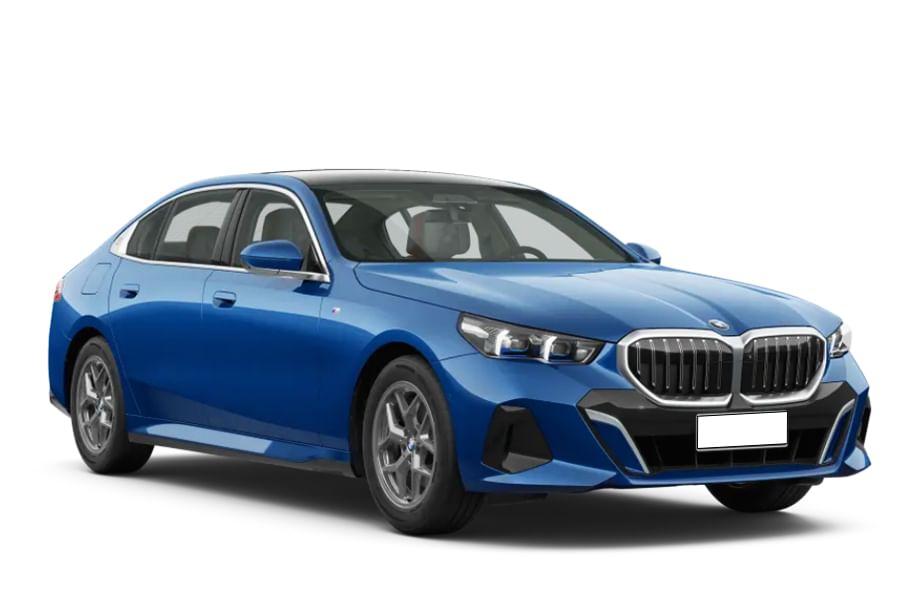






 Price
Price Engine
Engine Transmission
Transmission Braking
Braking Efficiency
Efficiency Acceleration
Acceleration Max speeds in gear
Max speeds in gear Noise Level
Noise Level Body
Body Suspension
Suspension Steering
Steering Dimensions
Dimensions
Comments
Member Login
Personal Details
No comments yet. Be the first to comment.